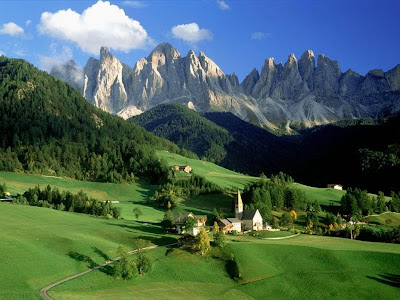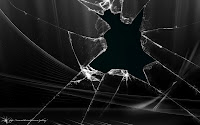SamFordphotol3csc
Tuesday 2 July 2013
Monday 1 July 2013
Tuesday 23 April 2013
Wednesday 13 February 2013
Crawley future looking images
This is the original image i took before editing in Photoshop
This is the edited image. In Photoshop i replaced the sky with a purple sky to make it look futuristic. I then used tools such as feathering to make the horizon smooth and make it look more realistic. This is the original image i took before editing in Photoshop.
This is the image that i edited in Photoshop. I took out the sky from the original image and put this planet in using various tools in Photoshop.
This is the original image i took before editing in Photoshop.
Tuesday 15 January 2013
L3 Photography
| 1: Type of production and brief details on Subject/Concept that you wish to portray: I am going to portray pictures of Crawley Town in a few of its locations and show what it could look like in the future. My ideas are that I want to show how the sky might change colour in the future or that it might have more moons or planets that are clearly visible. I also want to show things that could be walking around us in the future which we don't have at the moment such as robots. 2. Facilities: What facilities do you need for this project list all including software and hardware for the whole project: For this project I will need a DSLR camera to take the pictures on, A SD card and a computer so that I can store images that I take on the camera to the SD card and then easily transfer them to the computer, I will also need to use Photoshop so that I can edit the images I take to give them the effects I want. 3. Finance: If you produced this project outside of the college you need to show how much it would cost to hire the equipment that you intend to use. List the item and the purchase/hire cost next to it.
4. Codes of practice and regulation: What regulations do you need to be aware of. Think about college policy as well as regulatory bodies look at Photography Copyright and copyright law. I will have to be careful with the college equipment i am going to use, such as the camera. I will have to make sure that their is no body under the age of 16 years old in my images who doesn't have parental permission to be in the photo. I should also represent the college positively in my time away from campus. I can not use any images that are owned by somoene without their permission as this is copyright. 5. Contributors: Who do you need to help this for you project? This includes talent and crew. Crew and Role: N/A Talent and Role: N/A 6. Presentation: How will you present the pictures for the fact sheet/leaflet for your exhibition t? Can you give some rough thumbnails of the final layout? |
Tuesday 11 December 2012
Photoshop - Blur and Sharpen Effect
This is the original image.
First i blurred the sky at a strength of 80. I then blurred the mountains in the back ground at strength level of 65.
The next part of i did was blurring the hills just in front of the mountains at 45 strength and then 30 strength on the grass on the foreground of the photo to help make the image more visible.
Then on the village i used the sharpen tool at a strength of 40 to help make the village stand out. This then helps to make this model village a better picture.
Tuesday 4 December 2012
PhotoShop - Retouch and Healing Tool
This is the original image that i used . Im going to use the Spot Healing Brush Tool to get rid of some of the old and decayed parts of this wall.
This is the wall once i have now used the Spot Healing Brush Tool and it has replaced the old and decayed parts of the wall with more bricks.
The shortcut i used for the Spot Healing Brush was (J)
This is the wall once i have now used the Spot Healing Brush Tool and it has replaced the old and decayed parts of the wall with more bricks.
The shortcut i used for the Spot Healing Brush was (J)
Sunday 2 December 2012
Photoshop - Dramatic broken glass effect on Mike Tyson
This was the original image that i used. I got this image from http://mediagallery.usatoday.com/Mike+Tyson+through+the+years/G3524
I then used this broken glass picture and i was going to use these images in photo shop to make it look like Mike Tyson was looking through broken glass.
I used different things such as horizontally flipping the glass image to position it better, using the effect screen to make it transparent and then it started to come to shape. I then used the polygon lasso tool to weeve in and out of the hole in the glass so that i could make a mask to make it look like Mike Tyson was really looking through a broken part of glass.
I also used a grey texture layer in-between these two images to make the glass look a different colour and to help make it look like Mike Tyson was looking through glass.
This is the finalised image.
I then used this broken glass picture and i was going to use these images in photo shop to make it look like Mike Tyson was looking through broken glass.
I used different things such as horizontally flipping the glass image to position it better, using the effect screen to make it transparent and then it started to come to shape. I then used the polygon lasso tool to weeve in and out of the hole in the glass so that i could make a mask to make it look like Mike Tyson was really looking through a broken part of glass.
I also used a grey texture layer in-between these two images to make the glass look a different colour and to help make it look like Mike Tyson was looking through glass.
This is the finalised image.
Wednesday 28 November 2012
Photoshop - Layers
To make this image inserted 3 images to make 3 layers. I then used the eraser tool to rub out parts of the layers to make the layer behind it show. I then used the move tool to re arange the parts of the heads i made to make it look more together. Then i flattned the image to make it look more blended together.
Wednesday 21 November 2012
Photoshop edits of Alan Sugar
Shortcuts Used
Lassoo = L Key
Copy Image = Ctrl + C
Change the selection into a layer = Ctrl + J
Scale the layer = Ctrl + T
Wednesday 17 October 2012
Fashion Photography
Fashion Photography
Fashion photography started in 1839. There has always been an interest in fashionable clothes but when the idea of photographing came around it became very popular. Clothing companys started to use fashion photography so that it could help them sell and advertise their clothing. As fashion photography developed through out the years, photogtaphers started to bring in the idea of each photo could have a story or a mood to it. Now adays there are massive fashion magizines such as vogue that use fashion photography to advertise clothes and they are a massive part of the clothing and fashion industry.
http://en.wikipedia.org/wiki/Fashion_photography
When is an image a portrait and when is it a fashion photograph?
A portrait and a fashion photograph can be very similar because they can look the same exept they have different purposes. A portrait image is about the person in the picture only and it can be about their emotions and it focuses on the person in the image only. A fashion photograph is different to this because it is focused on the clothes the model is wearing and not the person. The point of having fashion photos done is for the people viewing the image to release the colour, size , texture of the clothes. Portrait photos can also be focused on groups of people suchb as families when the photographer does family portrait photos and the photographer would most probably tell the family to smile. In other portrait photos in a studio with one model then he will tell them to do other poses to express emotion. If the family or model are happy with their photos then they will buy the photos and they might be put in such places as their homes. This is diffeent to a fashion photograph because as the photos are based on a specific thing (the clothes) then the photos might be put in a fashion magazine. An example of one of the worlds most large and popular fashion magazines is Vogue magazine. Once portrait photos have been taken they do not get edited and this means that it shows the model in the images as naturally as possible. Where as once fashion photos have been taken they are edited on computers to make the model look 'perfect', this can involve doing such things to them as making their bodys thinner, taking away such things as freckles and spots. This means that fashion photos can be made to out be fake in its ways. Another difference between portrait photos and fashion photographs is that when portrait photos are being done it is really calm for the model and also the person viewing the image once it has been taken can feel this even if they werent there when the photo was taken. When you are viewing a fashion photograph you can see that it must have been very stressfull for the crew to set up everything as they might have had a lot of things to do such as making a specific setting within a time shedule. You can just tell that it must have been frustrating in all when you are looking at a fashion photo. This is a difference between them that you can only feel because it might not be an exxpression that you can see. This all shows that when you think about it there are a lot of differences for when a photograph is a portait photo and when it is a fashion photo and these differences can be both visualy seen and emotionally seen.
NOTES
When is an image a portrait and when is it a fashion photograph
They look the same but they have different purposes. The fashion photography is about the clothes and a portrait picture is only about the person in the photograph.
To what degree should an image be manipulated to go into a fashion magazine?
The image is all about advertising so it has to be able to sell. There is a lot of make up applied to the selected model, and then the image is edited and finalised in a computer programme to do such things as make the models body thinner or stretch their neck.
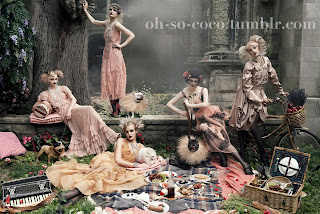
Fashion photography started in 1839. There has always been an interest in fashionable clothes but when the idea of photographing came around it became very popular. Clothing companys started to use fashion photography so that it could help them sell and advertise their clothing. As fashion photography developed through out the years, photogtaphers started to bring in the idea of each photo could have a story or a mood to it. Now adays there are massive fashion magizines such as vogue that use fashion photography to advertise clothes and they are a massive part of the clothing and fashion industry.
http://en.wikipedia.org/wiki/Fashion_photography
When is an image a portrait and when is it a fashion photograph?
A portrait and a fashion photograph can be very similar because they can look the same exept they have different purposes. A portrait image is about the person in the picture only and it can be about their emotions and it focuses on the person in the image only. A fashion photograph is different to this because it is focused on the clothes the model is wearing and not the person. The point of having fashion photos done is for the people viewing the image to release the colour, size , texture of the clothes. Portrait photos can also be focused on groups of people suchb as families when the photographer does family portrait photos and the photographer would most probably tell the family to smile. In other portrait photos in a studio with one model then he will tell them to do other poses to express emotion. If the family or model are happy with their photos then they will buy the photos and they might be put in such places as their homes. This is diffeent to a fashion photograph because as the photos are based on a specific thing (the clothes) then the photos might be put in a fashion magazine. An example of one of the worlds most large and popular fashion magazines is Vogue magazine. Once portrait photos have been taken they do not get edited and this means that it shows the model in the images as naturally as possible. Where as once fashion photos have been taken they are edited on computers to make the model look 'perfect', this can involve doing such things to them as making their bodys thinner, taking away such things as freckles and spots. This means that fashion photos can be made to out be fake in its ways. Another difference between portrait photos and fashion photographs is that when portrait photos are being done it is really calm for the model and also the person viewing the image once it has been taken can feel this even if they werent there when the photo was taken. When you are viewing a fashion photograph you can see that it must have been very stressfull for the crew to set up everything as they might have had a lot of things to do such as making a specific setting within a time shedule. You can just tell that it must have been frustrating in all when you are looking at a fashion photo. This is a difference between them that you can only feel because it might not be an exxpression that you can see. This all shows that when you think about it there are a lot of differences for when a photograph is a portait photo and when it is a fashion photo and these differences can be both visualy seen and emotionally seen.
NOTES
When is an image a portrait and when is it a fashion photograph
They look the same but they have different purposes. The fashion photography is about the clothes and a portrait picture is only about the person in the photograph.
To what degree should an image be manipulated to go into a fashion magazine?
The image is all about advertising so it has to be able to sell. There is a lot of make up applied to the selected model, and then the image is edited and finalised in a computer programme to do such things as make the models body thinner or stretch their neck.

Wednesday 3 October 2012
Portraiture Photography
Portrait Photography
The first cameras that were used by portrait photographers were stiff cameras (meaning that it would take a few minutes to take a picture). This meant that only rich people were able to afford to have their portraits done as they had the money and also that portraiture was originally designed to make the rich look divine and powerful. An example of this are past kings and queens who were on the throne before cameras were even invented, they had their portraits painted and this was because they wanted to look Divine and powerful as well. As cameras developed over the years it meant that more people were able to have their portraits done as well. This means that portrait photography helped to make photography what it is today because without this technological determinism people would not be able to use photography how they use it today as it is a very common thing to see in your day to day lives.
Diane Arbus
 This is a portrait photograph that Diane Arbus took of one of the children in the Matthaei family. As you can see from this child's facial expression Diane Arbus really captured the child looking sad in this photo. She captured many other photographs showing similar emotions from people as well.
This is a portrait photograph that Diane Arbus took of one of the children in the Matthaei family. As you can see from this child's facial expression Diane Arbus really captured the child looking sad in this photo. She captured many other photographs showing similar emotions from people as well.
Portraiture notes
The first cameras that were used by portrait photographers were stiff cameras (meaning that it would take a few minutes to take a picture). This meant that only rich people were able to afford to have their portraits done as they had the money and also that portraiture was originally designed to make the rich look divine and powerful. An example of this are past kings and queens who were on the throne before cameras were even invented, they had their portraits painted and this was because they wanted to look Divine and powerful as well. As cameras developed over the years it meant that more people were able to have their portraits done as well. This means that portrait photography helped to make photography what it is today because without this technological determinism people would not be able to use photography how they use it today as it is a very common thing to see in your day to day lives.
Diane Arbus
Diane Arbus was an american photographer who roamed around the streets of New York taking pictures. She also took portrait pictures for families such as the Matthaei family. Diane Arbus had different motives for her pictures compared to other photographers because her motives were that she wanted to capture peoples emotions and not many other photographers captured that in people. For example, when she was doing portrait photographs for the Matthaei family she had a motive that she wanted to capture the children as sad and unhappy because that is how she saw children from rich families to be. She wanted to capture this specific emotion on rich families children because she grew up with a rick families and she knew what emotions rich families children felt as she had been in that same situation when she was a child. Because Diane Arbus had these sort of motives it made her photography very dark.
 This is a portrait photograph that Diane Arbus took of one of the children in the Matthaei family. As you can see from this child's facial expression Diane Arbus really captured the child looking sad in this photo. She captured many other photographs showing similar emotions from people as well.
This is a portrait photograph that Diane Arbus took of one of the children in the Matthaei family. As you can see from this child's facial expression Diane Arbus really captured the child looking sad in this photo. She captured many other photographs showing similar emotions from people as well.
On July 26th, 1971, Diane Arbus had committed suicide and she died at the age of 48 years old.
Tony Vaccaro
Tony Vaccaro is an american photographer and he is best known for his photographs taken during the second World War from where he was a solider photographer and he is also best known for his photography around Europe after the second World War. Tony Vaccaro also had a different motive towards portrait photography which was that he used to determine the personality of the person he was going to photograph before he actually took the picture. Tony Vaccaro did this because that way it portrays who the person really is in the portrait and not who they want to be.
Tony Vaccaro was once invited round Picasso's house to take portrait photos of him. When Tony was about to start taking Picasso's portraits, Picasso started posing for the camera but then Vaccaro fooled him into thinking there was something wrong with his camera. This then meant that Vaccaro could capture the image he wanted of Picasso which was of him being natural and not posing.
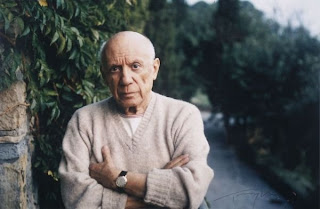
This is one of the portraits that Tony Vaccaro took of Picasso.
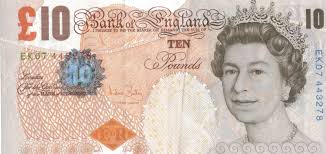 Portraits are so common now that we see them in our every day to day life. You can see portraits in such typical places as Galleries, however you don't realise how many portraits you see every day until you think about it. These are some examples of portraits that you see every day, The queens portrait because it is on money and stamps and people use these everyday. We also see peoples portraits on such things as billboards, and advertisement posters in such places as clothe shops and magazines.
Portraits are so common now that we see them in our every day to day life. You can see portraits in such typical places as Galleries, however you don't realise how many portraits you see every day until you think about it. These are some examples of portraits that you see every day, The queens portrait because it is on money and stamps and people use these everyday. We also see peoples portraits on such things as billboards, and advertisement posters in such places as clothe shops and magazines.
Tony Vaccaro
Tony Vaccaro is an american photographer and he is best known for his photographs taken during the second World War from where he was a solider photographer and he is also best known for his photography around Europe after the second World War. Tony Vaccaro also had a different motive towards portrait photography which was that he used to determine the personality of the person he was going to photograph before he actually took the picture. Tony Vaccaro did this because that way it portrays who the person really is in the portrait and not who they want to be.
Tony Vaccaro was once invited round Picasso's house to take portrait photos of him. When Tony was about to start taking Picasso's portraits, Picasso started posing for the camera but then Vaccaro fooled him into thinking there was something wrong with his camera. This then meant that Vaccaro could capture the image he wanted of Picasso which was of him being natural and not posing.

This is one of the portraits that Tony Vaccaro took of Picasso.
Techniques Photographers Use For Portrait Photography
Photographers can take portrait pictures of people in studios or outside in a certain place. If photographers take pictures of people outside of a studio then it can be anywhere. Some examples of places that photographers take peoples portraits that are outside of a studio are at a beach, or in the countryside. Photographers take peoples portraits in places like this because its in a place filled with natural light. Taking portrait pictures in places like these also help to bring out positive emotions. Portraiture notes
- Diane Arbus roamed the streets of New York. People say that because she didnt want to be herself thats what made her photography good because she wanted have other motives to capture types of emotions in people that other photographers didnt capture e.g.when she did one familys portrait she had a motive that she wanted to take pictures of their children being sad and not happy because that is how she saw they would be and she wanted to capture them like this. When she had motives like this it made her photography quite dark.
- In 1971 she comited suicide.
- Portraiter was mostly for Rich people in those days because they had the money for these pictures and it was because portraiter was designed to make the rich look divine.
- Tony vaccaro used to determine the personality of the person your taking the picture of before you take the picture because then it will bring out a message of what that person is really like, this way it portrays who they really are in the photo and not who they want to be.
- Larry clarks photography was as personal to him as it was a diary to some people.
- He published his first photos in1971 in an album called 'Tulsa'.
Wednesday 26 September 2012
Photo Journalism
Photo Journalism
Photojournalism is a form of journalism that involves collecting images and writing about them ready for publishing so the public can see them. If you are a photojournalist and you are writing about an image then you have to explain where the photo was taken, why it was taken, what is happening in the photo and why it is happening because otherwise the person looking at the photograph will not know the background information. For example if a picture was taken of someone dead in a war zone then the person looking at the image will want to know the location of where the war is.
Henri Cartier Bresson
Henri Cartier Bresson is known for being called the godfather of photojournalism as he made the expression "The decisive moment". This expression means that you take the picture at a specific moment and the picture you have taken will show a story or an action which people can easily see. For this to happen it may have to be precise timing.
His work is very important to the future of photojournalism because his work helps and motivates a lot of modern day photojournalists. He gets the credit for this because he put constant hard work into his job so that he could produce the best result. He waited in the streets for hours on end so that he could get pictures different to anyone else.
Some work of Henri Cartier Bresson's.

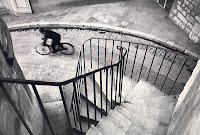

You can see from these pictures that he had a lot of time on his hands because some of these pictures would be very rare to capture.
Techniques and Equipment used by Henri Cartier Bresson
Henri Cartier Bresson studied Art as one of his subjects at college and that helped to develop his creative imagination. He had the money to go out and by himself the best camera their was out at that time and this camera was a LEICA camera, this camera would let him capture photos in slit seconds and their was no others of its type at that time. Henri Cartier Bresson had a advantage over other photographers because once he had left college he didn't have to go and make a living for himself because he had lots of money all ready. With this money he went and bought his Leica camera and started to bring his creative ideas to life. He started to take photographs on the streets and he had all the time in the world because he wasn't working like most people was after they had finished college. Because he had all this time he could hang around in places for hours just so that he could capture what he wanted to and that is the advantage he had over other photographers and that is what made him the godfather of Photo Journalism.
Robert Capa and Tony Vaccaro
Robert Capa and Tony Vaccaro had two very different roles in photojournalism during WW2. Robert Capa was employed by Life magazine and he had the freedom to go where ever he wanted. Robert Capa pretty much followed the army so that he could be as close to the action as he wanted to so that he could capture what was happening with his camera. Tony Vaccaro was very different to Robert Capa because Tony Vaccaro was a solider and he took his photographs as a solider photographer. These two photojournalists were almost in competition with each other to get the best photographs of what life was like during the second world war. Tony Vaccaro was closer to the action because he was a soldier any photographs he took rightfully belonged to the army and this could be a bad thing because any photographs that Vaccaro had taken and the army thought that the world was no ready to see yet would be destroyed. So in a way Robert Capa had an advantage there because any photos he took he could decide himself what was kept and what went.
Some of Robert Capa's Work

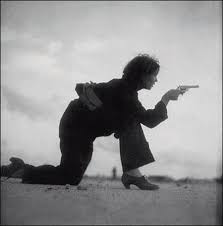

Some of Tony Vaccaro's Work
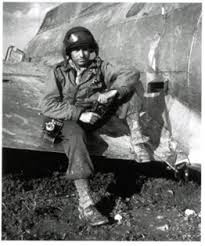
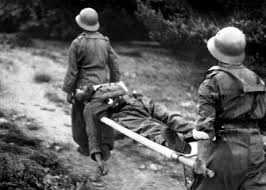
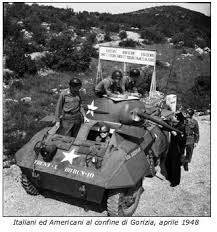
Eddie Adams Photograph
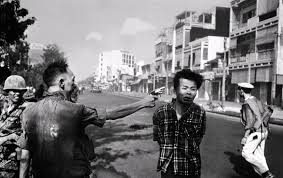
This photograph was titled 'The Execution'. This photograph was taken just a few moment before this mans death. The thing that is powerful about this image is that by the time the photo had been taken this mean had a bullet in his head and was laying on the floor dead. The video that was recorded of this didnt capture the same feeling as the photograph did because when you look at this still image you can see emotion and you can realise how thought provoking this image really is.
 This is a picture of the first leica camera.
This is a picture of the first leica camera.
Photo Journalism notes
Application
Context
Photojournalism is a form of journalism that involves collecting images and writing about them ready for publishing so the public can see them. If you are a photojournalist and you are writing about an image then you have to explain where the photo was taken, why it was taken, what is happening in the photo and why it is happening because otherwise the person looking at the photograph will not know the background information. For example if a picture was taken of someone dead in a war zone then the person looking at the image will want to know the location of where the war is.
Henri Cartier Bresson
Henri Cartier Bresson is known for being called the godfather of photojournalism as he made the expression "The decisive moment". This expression means that you take the picture at a specific moment and the picture you have taken will show a story or an action which people can easily see. For this to happen it may have to be precise timing.
His work is very important to the future of photojournalism because his work helps and motivates a lot of modern day photojournalists. He gets the credit for this because he put constant hard work into his job so that he could produce the best result. He waited in the streets for hours on end so that he could get pictures different to anyone else.
Some work of Henri Cartier Bresson's.



You can see from these pictures that he had a lot of time on his hands because some of these pictures would be very rare to capture.
Techniques and Equipment used by Henri Cartier Bresson
Henri Cartier Bresson studied Art as one of his subjects at college and that helped to develop his creative imagination. He had the money to go out and by himself the best camera their was out at that time and this camera was a LEICA camera, this camera would let him capture photos in slit seconds and their was no others of its type at that time. Henri Cartier Bresson had a advantage over other photographers because once he had left college he didn't have to go and make a living for himself because he had lots of money all ready. With this money he went and bought his Leica camera and started to bring his creative ideas to life. He started to take photographs on the streets and he had all the time in the world because he wasn't working like most people was after they had finished college. Because he had all this time he could hang around in places for hours just so that he could capture what he wanted to and that is the advantage he had over other photographers and that is what made him the godfather of Photo Journalism.
Robert Capa and Tony Vaccaro
Robert Capa and Tony Vaccaro had two very different roles in photojournalism during WW2. Robert Capa was employed by Life magazine and he had the freedom to go where ever he wanted. Robert Capa pretty much followed the army so that he could be as close to the action as he wanted to so that he could capture what was happening with his camera. Tony Vaccaro was very different to Robert Capa because Tony Vaccaro was a solider and he took his photographs as a solider photographer. These two photojournalists were almost in competition with each other to get the best photographs of what life was like during the second world war. Tony Vaccaro was closer to the action because he was a soldier any photographs he took rightfully belonged to the army and this could be a bad thing because any photographs that Vaccaro had taken and the army thought that the world was no ready to see yet would be destroyed. So in a way Robert Capa had an advantage there because any photos he took he could decide himself what was kept and what went.
Some of Robert Capa's Work
Some of Tony Vaccaro's Work
Eddie Adams Photograph
This photograph was titled 'The Execution'. This photograph was taken just a few moment before this mans death. The thing that is powerful about this image is that by the time the photo had been taken this mean had a bullet in his head and was laying on the floor dead. The video that was recorded of this didnt capture the same feeling as the photograph did because when you look at this still image you can see emotion and you can realise how thought provoking this image really is.
 This is a picture of the first leica camera.
This is a picture of the first leica camera.Photo Journalism notes
Application
- Henri cartier bresson was known as the god father of journalism. He started taking pictures on the streets in the 1930s. His pictures were about being in the right place at the right time so his pictures were very decision making.
- Robert Capa risked his life in the 2nd world war to take pictures.
- Tony Vaccaro was a soilder photographer. He developed his own photos in soilder helmets.
- Eddie Adams, photographer in the vietnamees war.
Context
- Photographs from D day had been taken back home to be published and most of them were destroyed.
- Robert Capa was employed by a magazine called life magazine and he was able to go where ever he wanted and that it why he was basically following the army so he could capture his photos. Any photos that Robert Kappa took belonged to him because he worked for laugh magazine and he was able to decide what photos he got to keep and get rid of.
- Tony Vaccaro was different because he was emplyed by the army and he got given a large camera by the army but he decided to scrap that and use his own. But unlike Robert Kappa, Tony vaccaro was more close to the action as he was a soilder photographer and he was more involved in what ever happned but this could be a problem because he was employed by the army and any photographs Vaccaro took rightfully belonged to the army and thats why any photos that the army thought the world wouldnt be able to handle seeing them would be destroyed.
- LEICA Camera
- Henri Cartier Bresson had this camera so that he could capture a photos within a split second.
- Argus c3 camera
- Technilogical Determinism
Subscribe to:
Posts (Atom)








